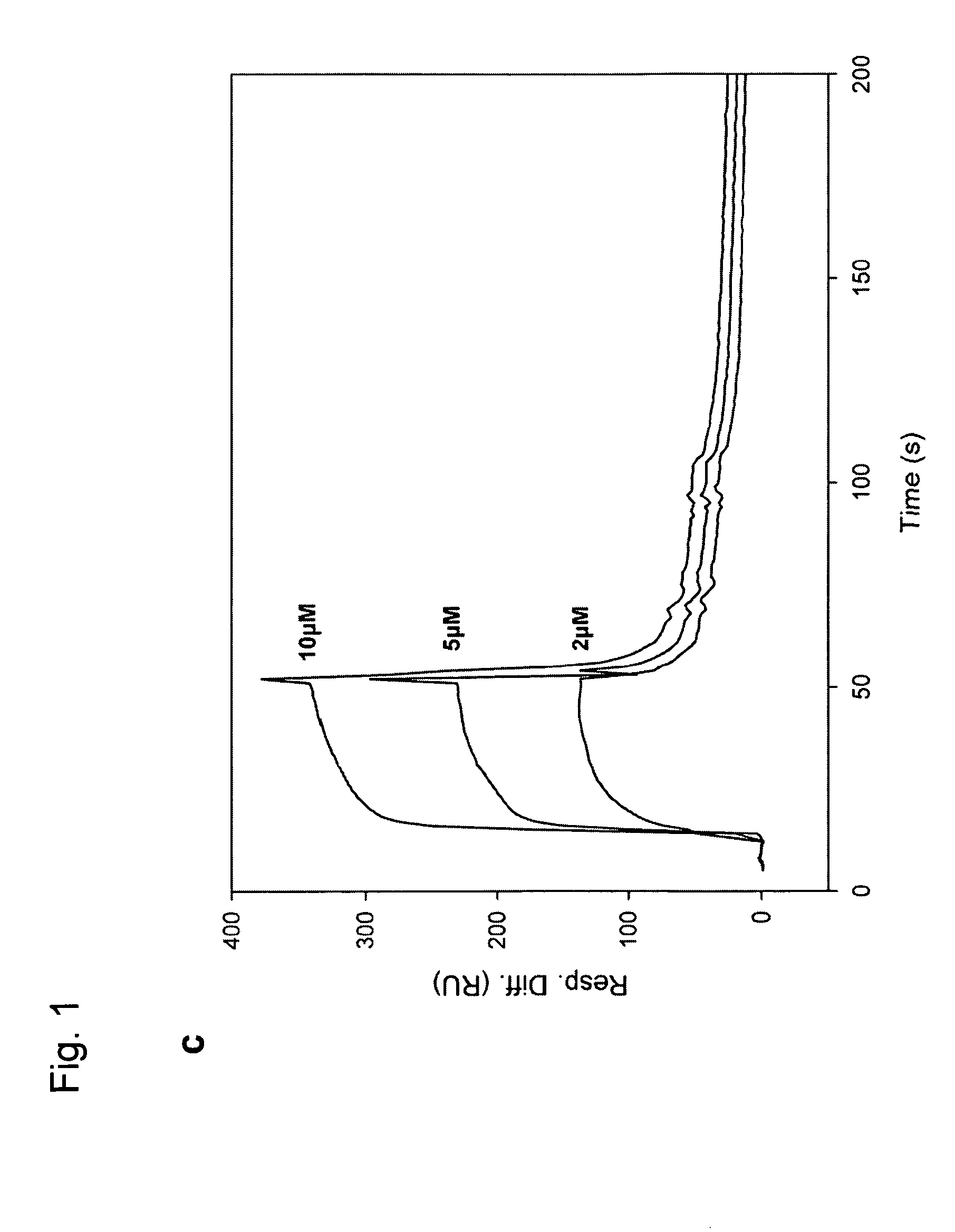Pharmaceutical composition for treatment of thrombosis-related diseases comprising a fragment of prolactin (PRL)-growth hormone (GH)-placental lactogen (PL)-family protein
a technology of prolactin and growth hormone, applied in the direction of drug compositions, peptide/protein ingredients, extracellular fluid disorder, etc., can solve the problems of heart attack, clots can become lodged in another part of the body, and excess quantities of thrombin formation
- Summary
- Abstract
- Description
- Claims
- Application Information
AI Technical Summary
Benefits of technology
Problems solved by technology
Method used
Image
Examples
example 1
Detecting the Interaction Partner of 16K hPRL by the Yeast-Two Hybrid system
[0177]In a search for potential 16K PRL targets, the Gal4-based yeast two-hybrid system was used to screen a HUVEC cDNA library for sequences encoding proteins interacting with 16K hPRL. For this, the 16K hPRL cDNA was cloned in frame with the Gal4 DNA-binding domain of the yeast two-hybrid vector.
[0178]Yeast two-hybrid screening was performed using the MATCHMAKER GAL4 Two-Hybrid System 3 (Clontech) according to the manufacturers instructions. 16K hPRL cDNA (stop140) was used as a bait and cloned into pGBKT7 vector in frame with the GAL4 DNA-binding domain (pBD-16K). The construct was tested for absence of transcriptional activation and toxicity. Subsequently, yeast AH109 cells were co-transformed with pBD-16K, SmaI-linearized prey vector (pGADT7), and a cDNA library which was generated from activated HUVEC mRNA. Following growth on media plates selective for reporter gene activation, prey plasmids from posi...
example 2
Detecting the Interaction of 16K hPRL and 14K hGH with PAI-1 by Surface Plasmon Resonance
[0180]Real-time monitoring of molecular interactions was performed at 25° C. using the BIAcore 1000 biosensor system (BIAcore) according to the manufacturer's instructions. Recombinant PAI-1 was immobilized to a CM5 sensor chip (BIAcore) via primary amine groups using the Amine Coupling Kit (BIAcore). For interaction analysis, 20 μl sample was diluted to various concentrations in HBS-EP (BIAcore) and was injected using the KINJECT command at a flow rate of 30 μl / minute after which the flow cells were regenerated by injection of 20 μl of regeneration buffer (10 mM glycine-HCl, pH 2.0). Association-rate (ka) and dissociation-rate (kd) constants were obtained by analysis of the sensorgrams using the Biaevaluation software, version 3.2. All measurements were performed at least in duplicate at all concentrations and the experiment was performed repeated 3 times.
[0181]The surface plasmon resonance (Bi...
example 3
Detecting the Interaction of 16K hPRL and 14K hGH with PAI-1 by Immunoprecipitation
[0182]The interaction was further confirmed by pull-down affinity assays. For the immunoprecipitation 4 μg of recombinant 16K hPRL or 14 hGH were mixed with 3 μg of recombinant wt PAI-1, 500 μl of conditioned media from HUVEC cells, 300 μl of human plasma or 100 μl of mouse plasma. The mixtures were incubated for 10 min at 37° C. 6 μg of mouse monoclonal antibody against PAI-1 (clone 33H1F7, recognize human and mouse PAI-1) was added to each tube and incubated overnight at 4° C. under rotation. For the experiments with mice expressing 16K hPRL, 300 μl of plasma from mice injected with Null-Ad or 16K-Ad adenovirus were collected 5 days after virus injection, and immunoprecipitation was performed as described above with same PAI-1 monoclonal antibody (33H1F7). Fifty microliters of protein A agarose was added to the mix and incubated overnight at 4° C. under rotation. After centrifugation for 1 min at 60...
PUM
| Property | Measurement | Unit |
|---|---|---|
| length | aaaaa | aaaaa |
| width | aaaaa | aaaaa |
| pressure | aaaaa | aaaaa |
Abstract
Description
Claims
Application Information
 Login to View More
Login to View More - R&D
- Intellectual Property
- Life Sciences
- Materials
- Tech Scout
- Unparalleled Data Quality
- Higher Quality Content
- 60% Fewer Hallucinations
Browse by: Latest US Patents, China's latest patents, Technical Efficacy Thesaurus, Application Domain, Technology Topic, Popular Technical Reports.
© 2025 PatSnap. All rights reserved.Legal|Privacy policy|Modern Slavery Act Transparency Statement|Sitemap|About US| Contact US: help@patsnap.com



